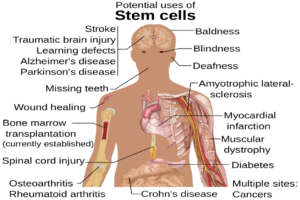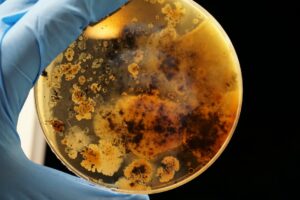
Figure 1: A symbol of the organization UN woman, an entity under the United Nations dedicated to promoting gender equality and female empowerment
Source: Wikimedia Commons
Human Immunodeficiency Virus (HIV) is often associated with the AIDS epidemic at its peak in the 1980s and 1990s, but millions of people still live with the disease today. In 2019 alone, 1.7 million people were diagnosed with HIV (“Global HIV & AIDS Statistics,” n.d.). HIV is a virus that targets the body’s T cells, which in turn weakens the immune system. HIV can lead to Acquired Immunodeficiency Syndrome (AIDS), leaving the infected individual extremely vulnerable to disease. Despite the stigmatic connection between this virus and gay, bisexual, or other men loving men (MLM), almost half of the new HIV infections in 2019 occurred in women and girls (“Global HIV & AIDS Statistics,” n.d.). For many women, HIV risk can be largely out of their hands because of community and systematic factors like HIV prevalence in their community, access to and reliability of health care, poverty status, and the higher occurrence of domestic violence against women (Cunningham, 2020).
Fortunately, prevention methods exist for individuals at high risk for HIV. Pre-exposure prophylaxis (PrEP) is a daily pill, with the most commonly used being of the brand Truvada, that can reduce risk of contracting HIV from sex by up to 99% and from drug injections by at least 74% when used correctly (“Pre-Exposure Prophylaxis (PrEP),” 2020). After four to seven daily doses, this drug creates a high level of antiretrovirals (ARVs) in HIV negative persons before any contact with the disease (Pebody, 2015). ARVs target retroviruses, which carry RNA and use an enzyme named reverse transcriptase to convert this RNA into DNA in order to incorporate themselves into a host’s DNA; HIV is a common example of a retrovirus. When on PrEP, these ARVs are numerous enough upon exposure to HIV to prevent the virus from entering and reproducing inside the exposed person’s cells (Pebody, 2015). A similar method is used in post-exposure prophylaxis (PEP), but this drug is used up to 28 days after exposure with HIV, starting within a 72-hour period of contact with the virus. It is thought to be highly effective if taken within the appropriate time range (“About PEP,” 2020).
However, awareness of these pills among women is low, and stigma surrounding taking PrEP medication is high. Many women worry about being perceived as HIV positive, promiscuous, or even unfaithful if on PrEP medication. Furthermore, the drug comes with a list of side effects, including headache, vomiting, and loss of appetite as well as bone and kidney damage if taken over a long-term period (Cunningham, 2020; “Pre-Exposure Prophylaxis,” n.d.).
A new long-acting injection could serve as a solution to these issues, and it may be more effective than current PrEP medications. This new HIV drug would be administered every 8 weeks, rather than a daily pill (Cunningham, 2020). For a high-risk individual, this longer-term prevention method may prove to be an easier commitment than a daily pill. The ease of treatment administration might improve treatment adherence, thereby decreasing the patient’s chances of contracting HIV. Additionally, the almost bimonthly injection would be more private, allowing women to avoid much of the stigma of taking HIV prevention drugs.
A number of trials have demonstrated the increased effectiveness of the injection. A 2017 Phase III trial of the drug in eastern and southern Africa included over 3,000 HIV negative cisgender women aged 18 to 45 who were sexually active and, because of their social status, had little control over their exposure to or prevention methods for the disease. In this trial, only .21% of participants receiving the injection contracted HIV, compared to 1.79% of those taking PrEP pills (Cunningham, 2020). Another trial involving cisgender men and transgender women who have sex with men reported similar, although less drastic, positive results; the first trial with cisgender women showed a reduction of HIV cases by 89% compared to PrEP while the second trial showed a 66% reduction (Cunningham, 2020). Because the trial results were so recently released, no set price or plan for commercial availability has yet been decided. Overall, this injection could provide a more discrete, manageable, and effective option for HIV prevention, especially for women. Nonetheless, physicians emphasize that much work remains to be done in HIV prevention. Bisola Ojikutu, an infectious disease physician who was not involved in the trials, comments that even with this new prevention method, stronger community outreach and increased education and discussion about HIV and its risk factors will be critical in preserving women’s health (Cunningham, 2020).
References
About PEP | PEP | HIV basics | HIV/AIDS | CDC. (2020, November 3). https://www.cdc.gov/hiv/basics/pep/about-pep.html
Cunningham, A. (2020, December 1). Long-lasting shots work better than daily pills to prevent HIV in at-risk women. Science News. https://www.sciencenews.org/article/hiv-prevention-women-prep-truvada-pill-shot
Global HIV & AIDS statistics—2020 fact sheet. (n.d.). Retrieved December 17, 2020, from https://www.unaids.org/en/resources/fact-sheet
Pebody, R. (2015). PrEP. NAM aidsmap. http://www.hiv-norden.org/wp-content/uploads/2017/01/PrEP_briefing_paper.pdf
Pre-exposure prophylaxis. (n.d.). Stanford Health Care; Stanford Medicine. Retrieved January 6, 2021, from https://stanfordhealthcare.org/medical-conditions/sexual-and-reproductive-health/hiv-aids/treatments/prep.html
Pre-exposure prophylaxis (PrEP) | HIV risk and prevention | HIV/AIDS | CDC. (2020, May 13). https://www.cdc.gov/hiv/risk/prep/index.html
Related Posts
Cranial Cartography: A New Method for Visualizing Blood Vessels and Stem Cells in the Skull
The diagram above displays the many potential uses of stem...
Read MoreWhen Bacteria Band Together – How Interactions Between Bacteria Can Change the Course of Disease
Source: Adrian Lange Bacteria are constantly fighting to preserve themselves;...
Read MoreFailures of Facial Recognition Amid Widespread Masking
Cover Image: Signs similar to this one have become increasingly...
Read MoreOlivia Brado



